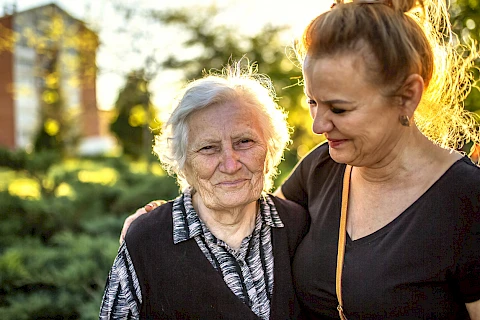
Late-day confusion is common among golden-agers, particularly those diagnosed with Alzheimer's or dementia. Late afternoon and evening hours can cause stupor, skittishness, and distress for older adults and their family guardians. We can help caregivers learn about the causes of senior sundowning, which will help them effectively address the condition.
What is Sundowning?
Sundowning, also known as sundown syndrome, is a term used to describe a set of neuropsychiatric symptoms occurring in older adults. These symptoms occur mainly in those with Alzheimer's disease or other types of cognitive decline. The signs often include the following that are noticeably worse during or after sunset:
- Confusion
- Anxiety
- Aggression
- Pacing or wandering
The reasons for this precise timing remain largely under study; however, it's evident that diurnal variation in dementia significantly impacts the quality of life for older retirees and presents substantial complications for their carers.
Potential Causes of Senior Sundowning
Understanding the triggers of diurnal variation of Alzheimer's disease can equip caregivers with the knowledge to manage these episodes effectively. Here are some contributing factors that need consideration:
Changes in Light
One of the most commonly acknowledged causes of senior sundowning is the transition from daylight to twilight. This shift in natural light can confuse the internal body clock of older adults with neurocognitive disorders, leading to increased anxiety and bafflement. Studies have linked these behaviors to the brain's diminished capacity to distinguish between daytime and nighttime due to the disease process.
Disrupted Sleep Patterns
Interrupted bedtime habits often accompany age-related cognitive decline and can serve as another trigger for evening agitation syndrome. Older adults with memory impairment may have fragmented slumber or difficulty sleeping through the night, leading to increased fatigue during the day. This exhaustion can exacerbate bewilderment and jumpiness as the day progresses, often peaking at dusk.
Biological Factors
Sunset syndrome can also be attributed to various biological factors related to aging and neurological changes. Specific physiological changes associated with progressive cognitive decline, such as increased brain plaque and reduced neurotransmitters, might exacerbate how they come out. Older adults with underlying medical conditions, such as visual or hearing impairments, may experience increased manifestations during the evening.
Managing Sundown Syndrome Episodes
While diurnal variation in inevitable cognitive decline can be challenging to deal with, there are strategies to address the manifestations. These strategies can improve elderly loved ones' living conditions.
- A consistent routine is one of the most effective ways to manage symptoms of diurnal variation in Alzheimer's. Establishing a schedule for meals, wake-up time, and relaxation can regulate the internal body clock and reduce brain fog.
- Creating a calm and peaceful environment, particularly at dusk, can also help. It could involve reducing noise, dimming lights, and ensuring older retirees feel safe and secure.
- Physical activity and a healthy diet are necessary for evening agitation syndrome. Regular light exercise can improve insomnia. A diet low in sugar and caffeine can also prevent symptoms from manifesting.
Caring for Older Adults Living With Evening Haze
Our professionally trained in-home care experts place the needs of seniors in their care first. If you're in Folsom, Loomis, Orangevale, Penryn, or Granite Bay, and your family member struggles with late-day brain fog, know help is available. At Senior Helpers Folsom-Granite Bay, we offer a wide range of elderly care services, including Alzheimer's and dementia care. Contact us today to learn more.